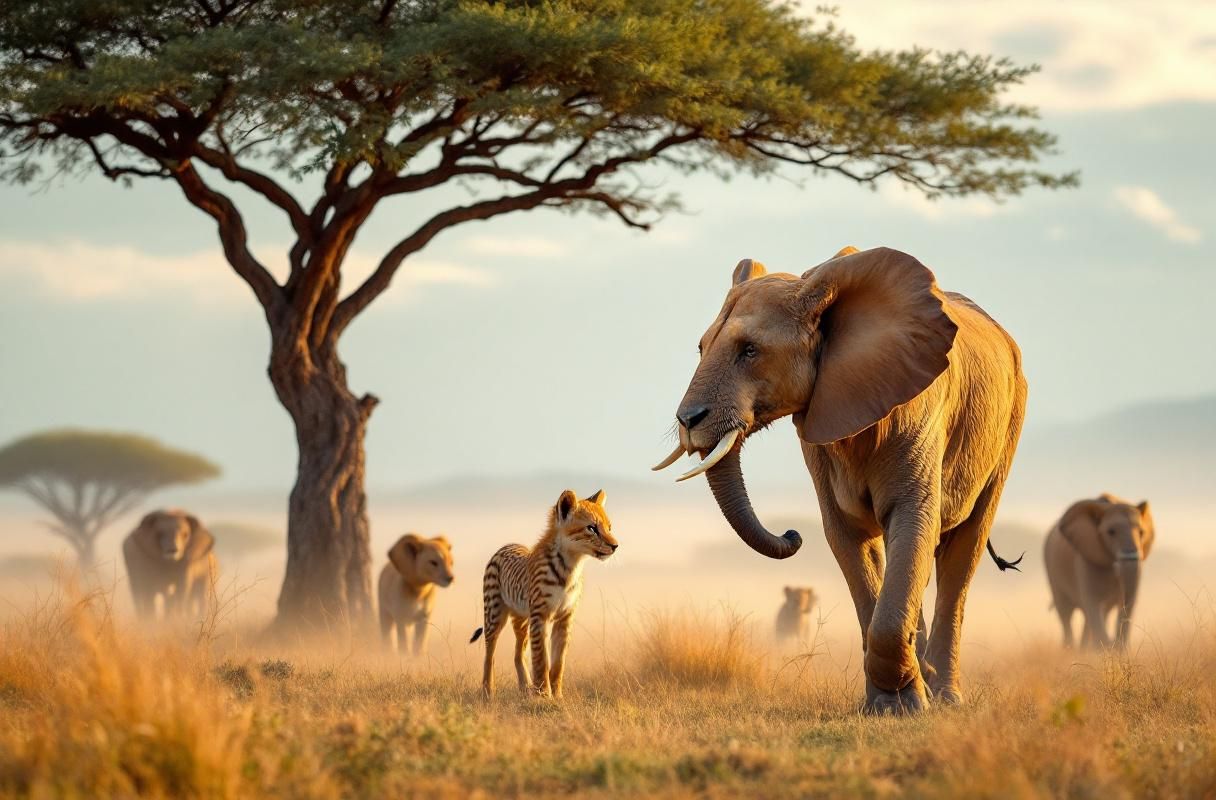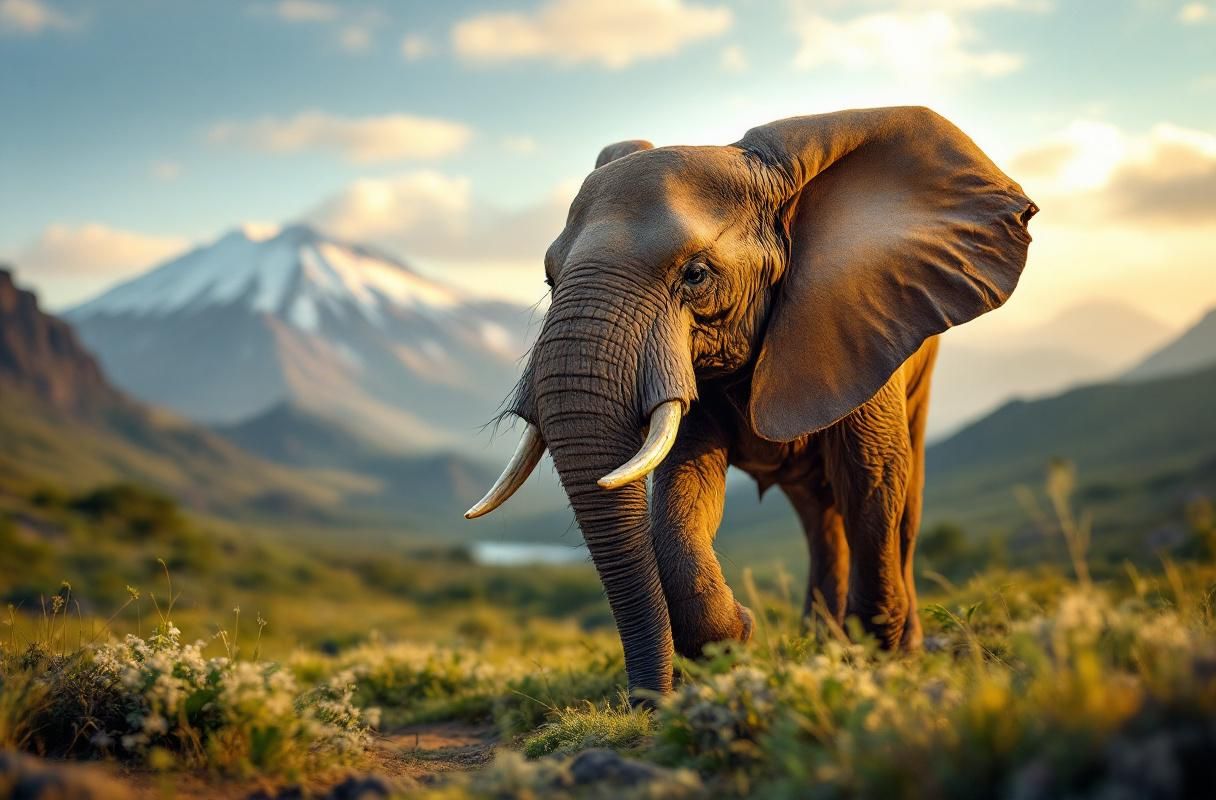
Exploring the wild landscapes of Africa is a dream for many adventure seekers, particularly those eager to witness the majestic African animals in their natural habitats. A safari adventure offers not only the thrill of spotting these incredible creatures but also the opportunity to appreciate the diverse ecosystems they inhabit. If you are planning to embark on a safari, especially while climbing Kilimanjaro, this guide will provide you with insights on the top African animals you must see and tips on how to spot them effectively.
Before diving into the specifics of African animals, it's essential to understand the safari experience. Safari tours can vary significantly based on the region, time of year, and type of safari you choose. Whether you opt for a guided tour, self-drive safari, or a walking safari, each offers unique perspectives on the wildlife.
Guided Tours: These tours are led by experienced guides who possess in-depth knowledge of the local wildlife and ecosystems. They enhance your experience with their insights and often know the best spots for sightings.
Self-Drive Safaris: For the more adventurous, self-drive safaris allow you to explore at your own pace. However, this requires thorough research and preparation to ensure safety and maximize wildlife sightings.
Walking Safaris: This immersive experience allows you to connect with nature on foot. Guided by an expert, you can learn about animal tracks, plants, and the subtle sounds of the African wilderness.
Timing your safari is crucial for optimal wildlife sightings. The dry season, typically from May to October, is often the best time for spotting African animals as they congregate around water sources. Conversely, the wet season can be more challenging due to dense foliage but offers a lush landscape and the birth of many young animals.
Climbing Kilimanjaro is an exhilarating experience, and combining it with a safari adventure enhances your journey. Here are the top ten African animals you should aim to spot during your climb and subsequent safari.

The African elephant is the largest land animal and a symbol of the continent's wildlife. Known for their intelligence and social structures, these magnificent creatures can often be seen in herds.
Often referred to as the "king of the jungle," the African lion is one of the most iconic animals. Watching a pride of lions can be a breathtaking experience.
Leopards are elusive and solitary, making them a thrilling sight. Their ability to climb trees adds to the challenge of spotting them.
These tall, graceful animals are a favorite among safari-goers. Their long necks allow them to reach high foliage, making them easier to spot in savannahs.
Cape buffalo are known for their strength and unpredictable behavior. They often move in large herds, making them easier to spot.
Both the black and white rhinoceros are critically endangered, making sightings particularly special. They are often found in protected reserves.
Zebras are known for their striking black and white stripes and are often found in large herds. They can be seen grazing in open plains.
The wildebeest migration is one of the most spectacular wildlife events in Africa. Observing this phenomenon is a must for any safari enthusiast.
The fastest land animal, the cheetah is known for its incredible speed and agility. Spotting one in action can be a thrilling experience.
While often submerged in water, hippos are fascinating creatures. They spend most of their day in water, emerging at night to graze.
Many travelers harbor misconceptions about spotting African animals on safari. Understanding these can enhance your safari experience.
While some animals may be visible, many are elusive and require patience and skill to spot. Wildlife behavior can be unpredictable, and factors such as time of day and weather play a significant role in visibility.
Not all safari tours offer the same experience. The choice of location, time of year, and type of safari can drastically affect the animals you see and how close you can get to them.
Africa's vast landscapes mean that some animals inhabit specific areas. It is essential to prioritize which animals you want to see and plan your itinerary accordingly.
To make the most of your safari experience, consider the following actionable tips:
Embarking on a safari adventure to spot African animals is an unforgettable experience that combines excitement, education, and appreciation for nature. By understanding the types of safari tours, knowing the top animals to look for, and being aware of common misconceptions, you can maximize your chances of witnessing these incredible creatures in their natural habitats.
As you prepare for your journey, remember to approach your adventure with respect for the wildlife and the environment. With careful planning and a keen eye, your safari will not only be a chance to see African animals but also an opportunity to connect deeply with the wilderness.
For further reading, consider exploring resources on wildlife conservation efforts in Africa or planning your next adventure with reputable safari operators. Embrace the thrill of the wild and make unforgettable memories on your safari journey.
Get free resources, early access to new features and updates.
No spam. Just fun educational emails!